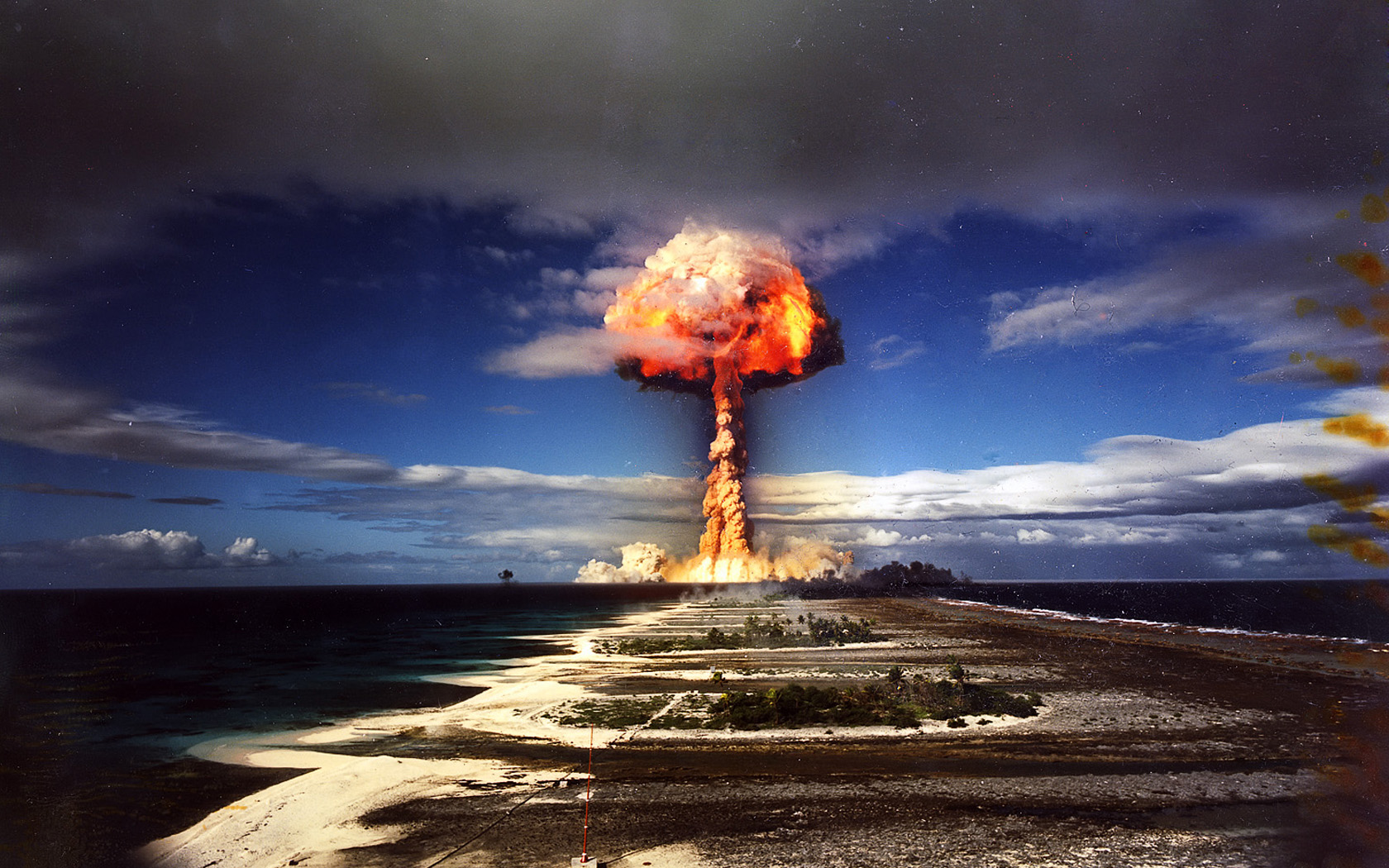

Finally, mercifully, he wrestled control of the plane at 20,000 feet. Battling against the yoke, he accidentally hit his microphone, broadcasting his struggles for control and consciousness. He had hit a pocket of severe turbulence almost immediately on entering the radioactive smoke, making his plane spin out of control. Hagan radioed that the sky had “grey and dark shades and still appear to be boiling.” From Robinson there came only heavy breathing. Meroney radioed across a final warning as the pair disappeared: “Don’t go in too far.”
ATOMIC BOMB MUSHROOM CLOUD FREE
Meroney broke free of the stem, paired up with his wingman, and ordered Robinson in Red-4 and pilot Bob Hagan in Red-3 to make their run. They spun, he later reported, “like the sweep second hand on a watch.” After five minutes the radiation instruments had “hit the peg”: whatever was in the stem of the cloud was greater than his plane could measure. Immediately their cockpits filled with a red glow Meroney described as “like the inside of a red-hot furnace.” Battling the winds and raging dust storm, Meroney kept his eye on the three radiation instruments in his cockpit. The pilots couldn’t fly through the top of the cloud, so they would have to make their run through the stem-a swirling cauldron of unpredictable winds, heat, and radiation that was thick with sand and coral from Elugelab’s remains.Īround 90 minutes after the Mike explosion, Meroney and his wingman ventured inside the maelstrom. In less than 90 seconds the mushroom cloud soared above 55,000 feet-the maximum ceiling for the Thunderjet-and eventually spread 25 miles high and 100 miles wide. A three-mile-wide fireball stretched across the horizon like a second sun and wiped Elugelab from the map, leaving a 164-foot-deep crater in the ocean floor. Mike detonated with a force of about 10.4 megatons-around 700 times more powerful than the bomb that had destroyed Hiroshima seven years earlier. Teller and Ulam added deuterium and tritium-neutron-rich isotopes of hydrogen-to the bomb to generate a two-stage explosion that created an even greater blast. But this isn’t a perfect process: much of the potential fuel of the first generation of nuclear weapons was wasted, and so in reality the detonations were significantly smaller than their theoretical yield.Ī hydrogen bomb, the brainchild of physicists Edward Teller and Stanislaw Ulam, worked differently. A nuclear bomb uses fission, each atom exploding and releasing neutrons that collide with neighboring atoms, overloading them and causing them to detonate-a chain reaction. Navigating through “Mike” would be another thing entirely.

The B-24 Liberator Dazzlin Dutchess and crew during World War II, undated. Air Force decided it had all the evidence it needed to send pilots inside the most challenging environment on Earth. In fact, there seemed to be no undue alarm among the crew members.” The U.S. Fackler never said whether the move was an accident or a deliberate stunt, but as he reported later, “No one keeled over dead, and no one got sick. On May 14, 1948, a B-29 bomber piloted by Lieutenant Colonel Paul Fackler cut through a finger-like spur of gas that had drifted away from an atomic test. Yet the first manned plane to go into a mushroom cloud did so against orders.

Unmanned drones were also flown into atomic clouds to take samples during test detonations, their controllers hoping for insights into the new superweapon. The first nuclear test, in July 1945, was witnessed from the air by future Nobel Prize–winning physicist Luis Alvarez (who also witnessed the dropping of the atomic bomb on Hiroshima). military had been using planes, usually staffed with scientists, to sample debris from atomic blasts since the earliest nuclear explosions. Robinson and the rest of his team were heading into the mushroom cloud. local time, “Mike”-the world’s first hydrogen bomb-had been detonated on the island of Elugelab, on the northern bend of the atoll. The 28-year-old, who had been shot down over Romania in 1944 and spent 10 weeks as a prisoner of war, was about to undertake the most perilous mission of his career. He wore a protective, lead-lined jacket in place of a life preserver. Robinson’s plane had been modified for the day’s assignment: his dashboard was augmented with a suite of scientific instruments, and the cigar-shaped fuel tanks on the wings were refashioned to hold filters to scoop up passing debris. In the cockpit of his F-84 Thunderjet, Captain Jimmy Robinson checked the unusual assortment of dials and gauges in front of him. On the morning of November 1, 1952, four jet fighters flew through the skies above Enewetak Atoll, an isolated horseshoe of coral islands in the middle of the Pacific Ocean.


 0 kommentar(er)
0 kommentar(er)
